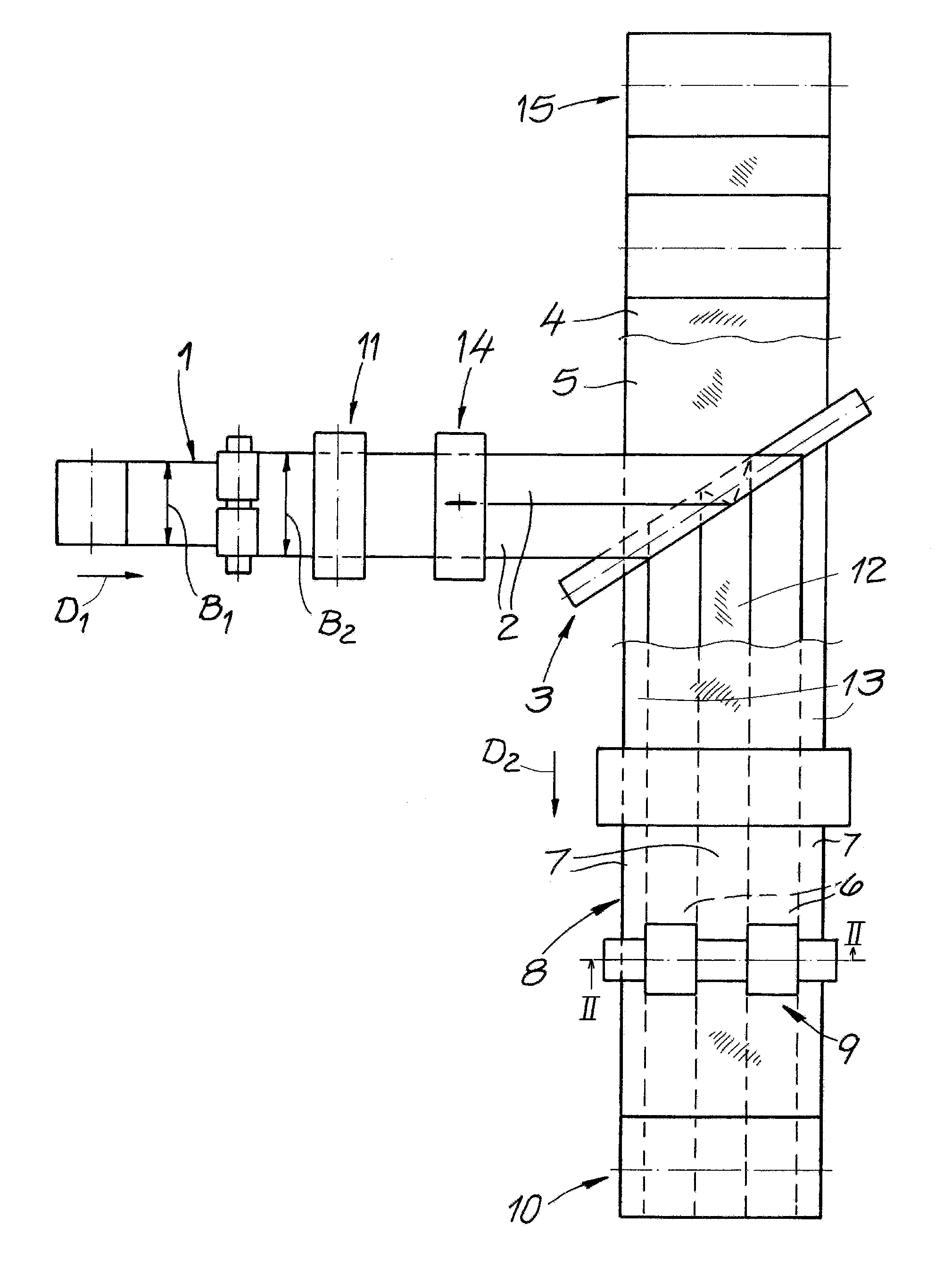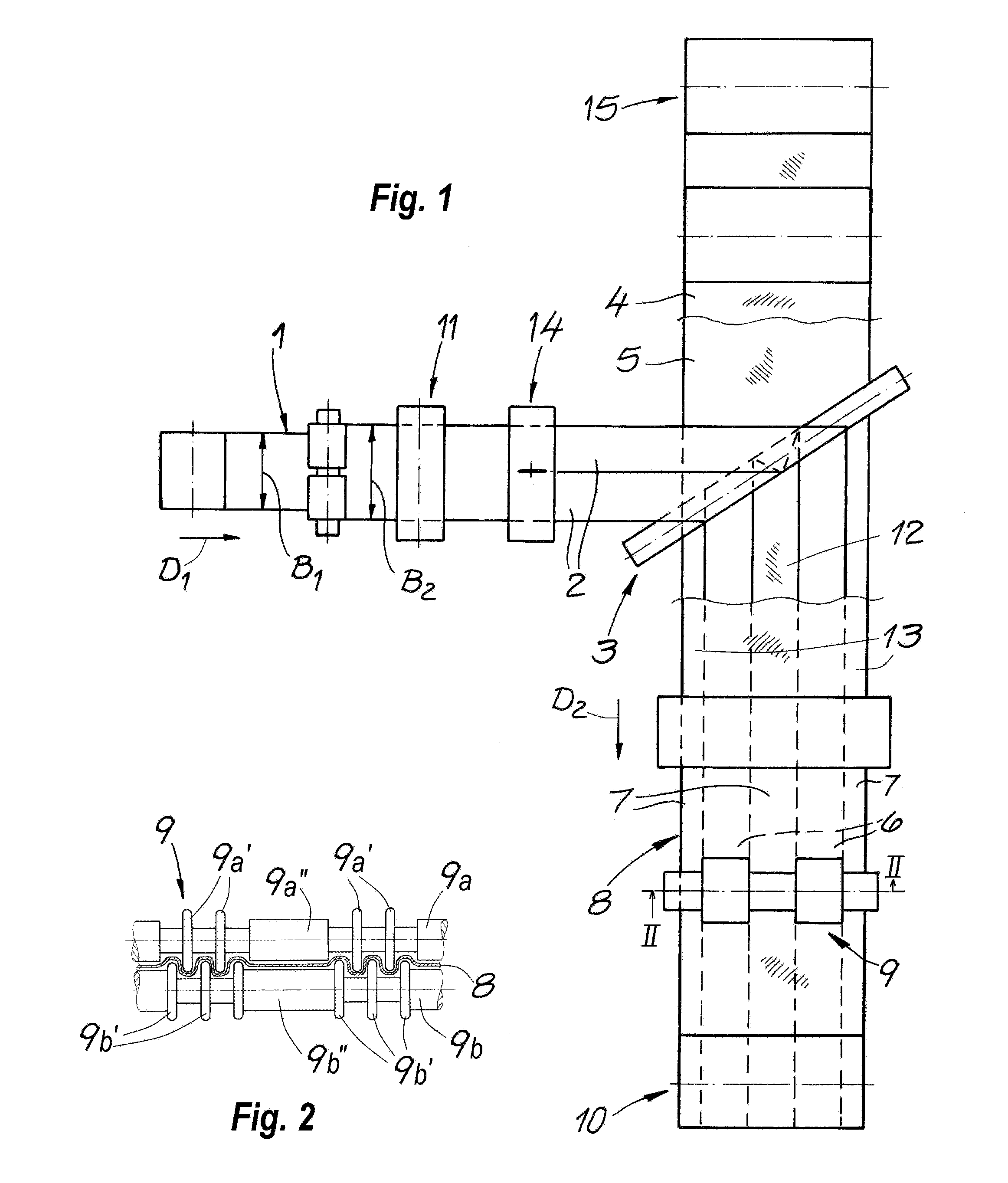Method of making an elastic laminate
a technology of elastic laminates and elastic strips, applied in the field of making elastic strips, can solve the problem of not fully reversible stretching
- Summary
- Abstract
- Description
- Claims
- Application Information
AI Technical Summary
Benefits of technology
Problems solved by technology
Method used
Image
Examples
Embodiment Construction
[0021]As seen in the drawing, an elastic film 1 is stretched transverse to a first web travel direction D1 in a preactivation station 11, and after elastic relaxation is formed at a cutting station 14 into two parallel strips 2. The strips 2 are guided over deflectors 3, and as parallel strips are deflected through 90° to a perpendicular travel direction D2 and laminated next to one another between two nonwoven material webs 4 and 5 fed in from a supply 15. The material webs 4 and 5 are guided above and beneath the strips 2 without prestretching, and are adhesively or thermally bonded to the strips 2. The view clearly shows that the elastic strips 2 are laminated at a gap-forming transverse spacing from one another between the cover layers formed by the webs 4 and 5, and that these nonwoven cover layers 4 and 5 are directly joined together in the gap 12 between the elastic strips 2 and at edge strips 13. Elastic regions 6 and inelastic regions 7 are thus formed in the laminate 8. Th...
PUM
| Property | Measurement | Unit |
|---|---|---|
| elastic | aaaaa | aaaaa |
| width | aaaaa | aaaaa |
| elastic properties | aaaaa | aaaaa |
Abstract
Description
Claims
Application Information
 Login to View More
Login to View More - R&D
- Intellectual Property
- Life Sciences
- Materials
- Tech Scout
- Unparalleled Data Quality
- Higher Quality Content
- 60% Fewer Hallucinations
Browse by: Latest US Patents, China's latest patents, Technical Efficacy Thesaurus, Application Domain, Technology Topic, Popular Technical Reports.
© 2025 PatSnap. All rights reserved.Legal|Privacy policy|Modern Slavery Act Transparency Statement|Sitemap|About US| Contact US: help@patsnap.com


